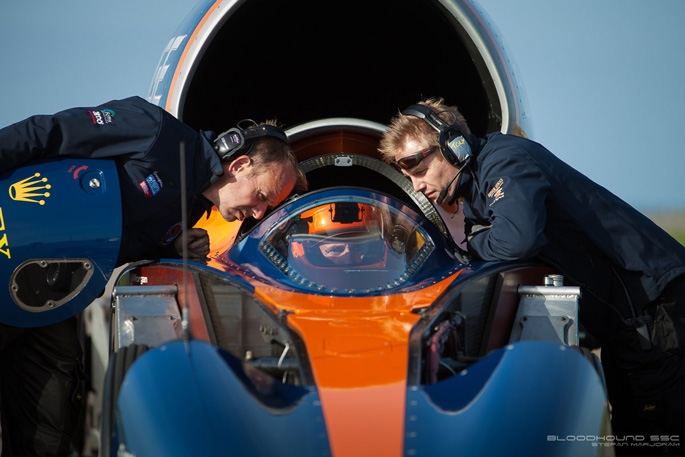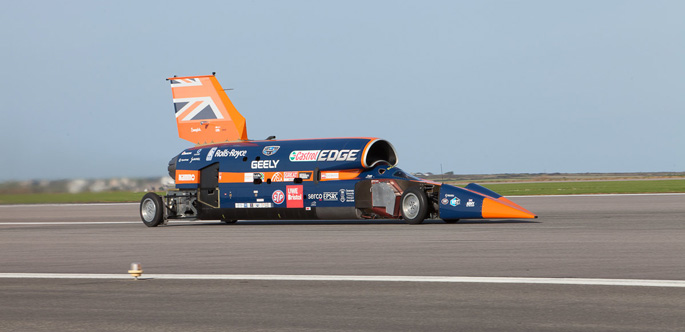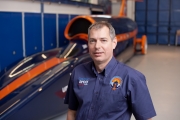
Getting any new model of car ready to be driven for the first time is a major engineering challenge, and even more so when it is a one-off car designed to be driven at supersonic speeds. So no-one was more delighted by BLOODHOUND SSC’s successful performance at Cornwall Airport Newquay in October than engineering director Mark Chapman.

The five weeks that the BLOODHOUND team spent at Newquay were a resounding success. Although the most visible signs were the three public days over the last weekend of October, the weeks beforehand were filled with a whole host of engineering trials and tests to prepare the Car for the runway and to ‘shake down’ the systems ahead of any attempt in South Africa.
Newquay achievements
In all, there were two static tie-down tests and 21 dynamic runs. The EJ200 jet engine performed flawlessly, and during the tie-down tests achieved thrust that was nearly equivalent to that on the test bed at Rolls-Royce in Bristol, at around 80kN.
This was the biggest test for the Car, as the intake was designed to operate at very high speeds and optimised for performance at Mach 1.1, so the key challenge at Newquay was to ascertain how much performance it would give when static and at low speeds. The ability for Andy to select full power from stationary has huge benefits for when we run in the desert next year.
The top speed recorded by Andy was over 200mph, which was even more impressive given that he achieved this in around 8 seconds, pulling around 1.5g acceleration. To put this into context, a Bugatti Veyron would take 24 seconds. It was also impressive that this was with only around 3 seconds of reheat. For a world land speed record attempt, Andy will have reheat selected for over 50 seconds and, with the rocket, be accelerating almost twice as quickly at a sustained 2.5–2.8g.
Next steps
Building on the success of Newquay, we’re now going to prepare the Car for ‘high speed’ running next year. As we’ve gone as fast as we can on a runway, that will mean going to the desert.
In parallel, we will be working with Nammo to complete the development of the monopropellant motor for the first year’s record attempt. This requires the rocket to produce the additional 40-45kN of thrust we need to break the record set by Thrust SSC in 1997.
Roll on 2018!





